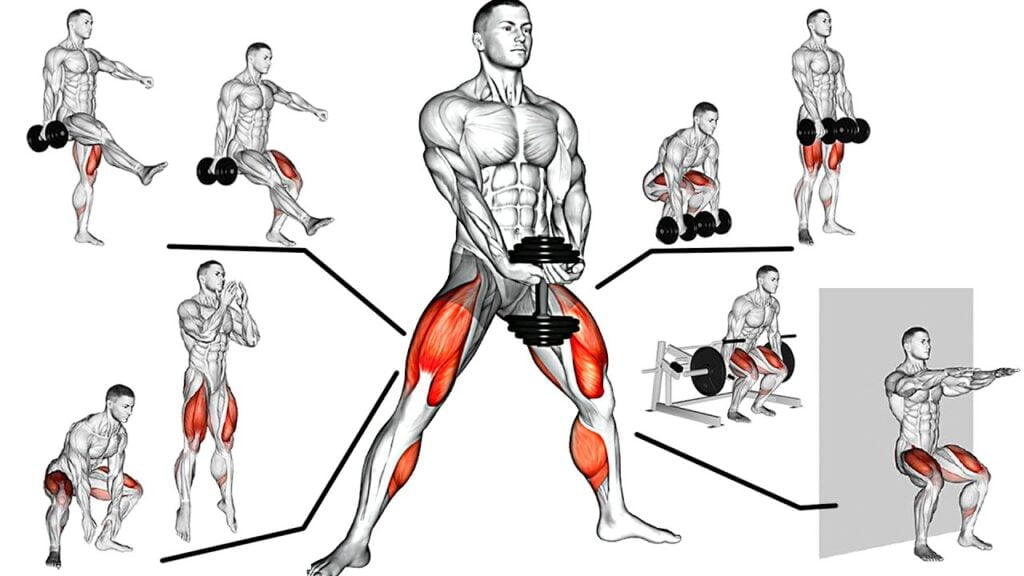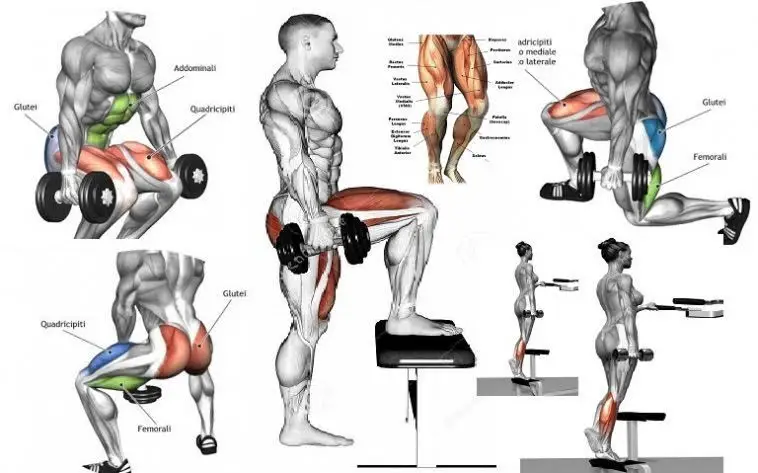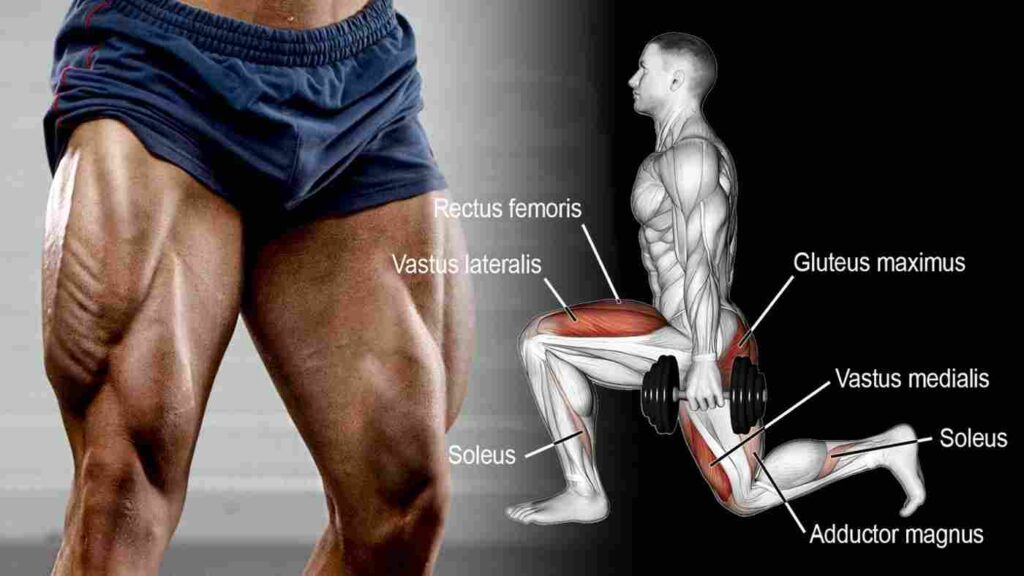Introduction
Are you in pursuit of firm, shapely glutes that turn heads and boost your confidence? You’re not alone. Many fitness enthusiasts are discovering the incredible power of resistance band glute workouts. This guide is your ticket to achieving the strong, sculpted lower body you’ve always wanted. We’ll explore the world of resistance band exercises that target your glutes, helping you build strength, tone muscles, and enhance your overall fitness. By the end of this article, you’ll have all the tools and knowledge you need to perform a resistance band glute workout like a pro.
Understanding Glutes
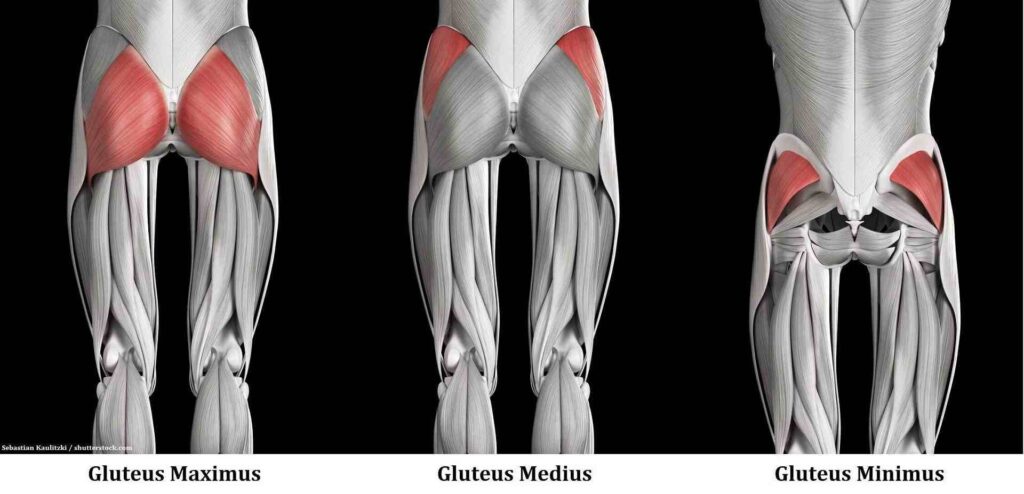
The glutes, or gluteal muscles, are a group of three muscles located in the buttocks: the gluteus maximus, gluteus medius, and gluteus minimus. These muscles are among the largest and most powerful in the human body.
- Gluteus Maximus: This is the largest of the three and is responsible for hip extension, external rotation of the thigh, and outward leg movement. It’s the muscle responsible for giving your buttocks their shape and power, allowing you to stand up from a seated position or propel your body forward when walking, running, or climbing stairs.
- Gluteus Medius: Situated on the outer surface of the pelvis, this muscle assists with hip abduction and internal rotation. It plays a significant role in stabilizing your pelvis and preventing it from tilting when you’re on one leg, as in walking and running.
- Gluteus Minimus: A smaller muscle located underneath the gluteus medius, the gluteus minimus primarily assists with hip abduction and internal rotation. It also contributes to the overall stability of the hip joint.
Role of Glutes in Daily Life
Your glutes are not just about aesthetics; they play a crucial role in maintaining your overall health and well-being. Here are some of the everyday functions in which your glutes are involved:
- Walking and Running: The gluteus maximus powers your strides, helping you move forward and maintain an upright posture.
- Maintaining Balance: The gluteus medius and minimus help you stay balanced, especially when you’re on one leg, as in activities like yoga, dancing, or simply standing.
- Posture and Spine Support: Strong glutes are essential for maintaining a healthy and upright posture. They help prevent lower back pain and promote spinal stability.
- Core Strength: Glutes work in harmony with the core muscles to stabilize the pelvis and support the lower back.
- Sports Performance: Athletes, whether sprinters, jumpers, or weightlifters, rely on powerful glutes for explosive movements and enhanced performance.
SHOP FOR THE RESISTANCE BAND ON AMAZON
The glutes are not just about aesthetics; they are a functional group of muscles that impact our daily activities, posture, and overall well-being. Understanding their anatomy and role in the body is crucial as we explore the benefits of a resistance band glute workout and how it can help you achieve a stronger, healthier lower body.
Benefits of a Resistance Band Glute Workout
Engaging in a resistance band glute workout offers numerous advantages, making it a popular choice for individuals seeking to strengthen and tone their glutes. Here’s a brief explanation of these benefits:
- Toning and Shaping: A resistance band glute workout is an effective way to target and isolate your glute muscles. The resistance provided by the bands challenges your muscles, helping you achieve a more toned and sculpted appearance in your lower body.
- Injury Prevention and Posture Improvement: Strengthening your glutes is key to maintaining good posture and reducing the risk of injuries, especially in the lower back and knees. By building stronger glute muscles, you provide better support to your spine and pelvis, helping you stand and move with greater stability and alignment.
- Enhanced Athletic Performance: Strong glutes play a crucial role in various physical activities such as running, cycling, and sports. A resistance band glute workout can improve your overall athletic performance by increasing your power and speed, as well as your ability to jump and change directions effectively.
- Versatility: Resistance bands are incredibly versatile and can be used for a wide range of exercises, not just for the glutes. This means you can have a full-body workout with just one piece of equipment, making it a cost-effective and space-saving choice.
- Suitable for All Fitness Levels: Whether you’re a beginner or an experienced athlete, resistance band glute workouts can be tailored to your fitness level. You can easily adjust the resistance level and the complexity of the exercises to match your specific needs and goals.
- Convenience and Portability: Resistance bands are lightweight and compact, making them a convenient option for those who prefer to work out at home, in the gym, or while traveling. You can carry them with you wherever you go, ensuring you never miss a workout.
- Gradual Progression: Resistance bands allow for gradual progression in your workouts. As your glute strength improves, you can easily increase the resistance by using bands with higher levels of tension, ensuring your exercises remain challenging and effective.
SHOP FOR THE ANKLE STRAPS ON AMAZON
In summary, a resistance band glute workout provides a range of benefits, including toning, injury prevention, improved posture, enhanced athletic performance, versatility, accessibility for all fitness levels, and the convenience of portability. These advantages make it a valuable addition to your fitness routine, helping you achieve a stronger and more attractive lower body.
How to Choose the Right Resistance Band
Choosing the right resistance band is a crucial step in ensuring an effective and safe glute workout. With a variety of resistance levels and band types available, it’s essential to select the one that suits your fitness level and workout goals. Here, we’ll guide you through the process of choosing the perfect resistance band for your resistance band glute workout.
Types of Resistance Bands
- Loop Resistance Bands: Loop bands, also known as mini bands, are small, continuous loops of latex or fabric. They’re excellent for lower body exercises and come in a range of resistance levels. Loop bands are particularly useful for glute activation exercises like clamshells, donkey kicks, and squats. They’re versatile, portable, and great for both beginners and advanced users.
- Therabands or Flat Resistance Bands: These bands are flat, wide strips of latex or fabric. They don’t form a loop and can be tied to the desired length. Flat resistance bands offer versatility in terms of exercise variety and can be used for upper and lower-body workouts. They also come in various resistance levels.
- Tube Resistance Bands: Tube bands consist of a tube with handles on both ends. They offer a wide range of resistance levels and are excellent for full-body workouts, including glute exercises. Tube bands are ideal for exercises like leg curls, kickbacks, and squats.
Selecting the Appropriate Resistance Level
Choosing the right resistance level is crucial to ensure that your glute workout is challenging but not too difficult. Here’s how to determine the appropriate resistance level:
- Beginner: If you’re new to resistance band workouts or have limited strength, start with a light resistance band. Light bands are great for learning proper form and building a foundation.
- Intermediate: If you’ve been working out and have some strength, a medium resistance band is a good choice. It provides enough resistance to challenge your muscles without overexerting yourself.
- Advanced: Advanced users with a good level of strength can opt for heavy or extra-heavy resistance bands. These bands provide significant resistance, making them suitable for those looking to build muscle and strength.
- Testing: A simple way to find the right resistance band is to try a few reps of the exercise you plan to perform. If the band is too easy and you can complete the reps without feeling much resistance, switch to a higher resistance band. On the other hand, if the band makes the exercise too difficult and your form suffers, consider a lighter band.
Additional Considerations
- Quality: Ensure that you invest in high-quality bands that won’t snap or break during your workout. Look for reputable brands known for their durability.
- Durability: Check the resistance band for any signs of wear or damage before each use. If you notice any tears or weaknesses, it’s time to replace the band to prevent accidents.
- Length: Make sure the band you choose is long enough for your intended exercises. Longer bands are more versatile as they allow you to perform a wider range of movements.
SHOP FOR THE DOORWAY ANCHOR ON AMAZON
By carefully selecting the right type and resistance level of your resistance band, you’ll set the foundation for a successful and productive resistance band glute workout. Remember to prioritize safety and quality when making your choice to maximize the benefits of your workouts.
Top Resistance Band Glute Exercises
A resistance band glute workout can be incredibly effective in targeting and toning your glute muscles. These exercises provide the resistance needed to strengthen and shape your glutes, and they are suitable for all fitness levels. Here are the top resistance band glute exercises that you should incorporate into your routine:
Banded Clamshells
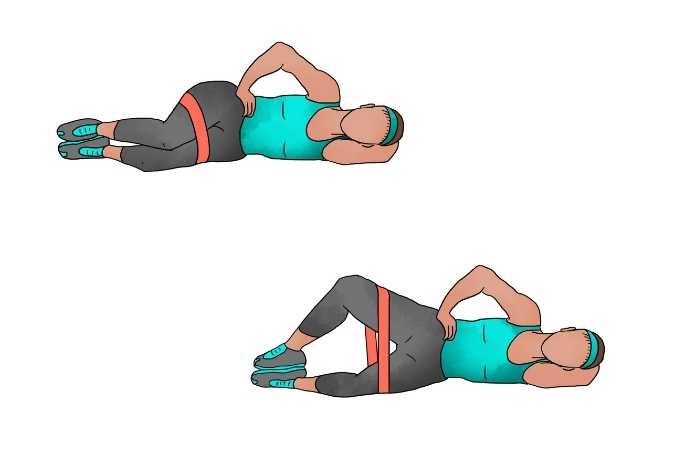
Clamshells target the gluteus medius, helping to shape and tone the sides of your hips.
How to do: Place a resistance band around your thighs, just above the knees. Lie on your side with your legs bent at a 90-degree angle. Keep your feet together and lift your top knee as high as possible, then lower it.
Tips: Maintain tension on the band throughout the exercise and focus on the mind-muscle connection with your glute muscles. Perform the movement slowly for better results.
Donkey Kicks
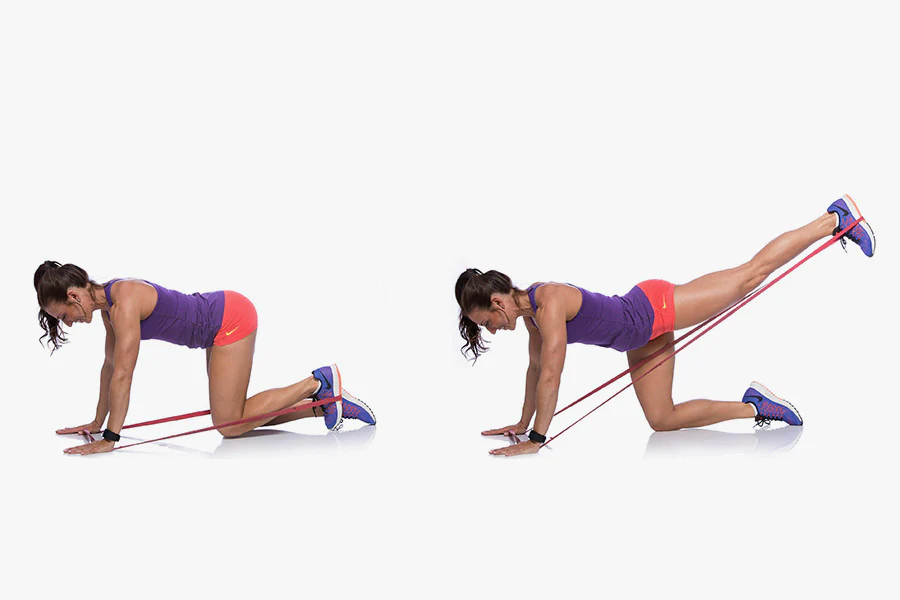
Donkey kicks are fantastic for targeting the gluteus maximus and creating a rounder, firmer backside.
How to do: Secure the band around your thighs and get on all fours with your hands under your shoulders. Keeping your knee bent at a 90-degree angle, lift one leg behind you, pushing against the resistance band, then lower it.
Tips: Squeeze your glutes at the top of the movement for maximum engagement. Ensure your back remains straight and your core is engaged to protect your lower back.
Glute Bridges
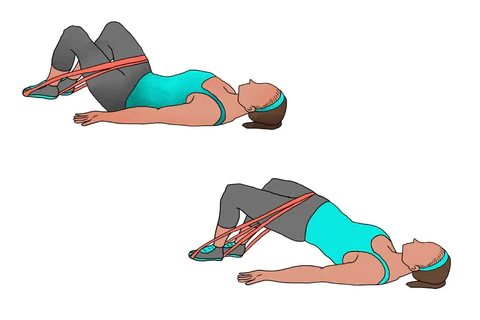
Glute bridges work the entire glute region and also engage your core and lower back.
How to do: Place the band just above your knees. Lie on your back with your knees bent and feet flat on the floor. Push through your heels to lift your hips off the ground, squeezing your glutes at the top, then lower them back down.
Tips: Make sure your feet are hip-width apart and your knees are in line with your feet. Keep your core engaged and maintain a straight line from your shoulders to your knees.
Lateral Leg Raises
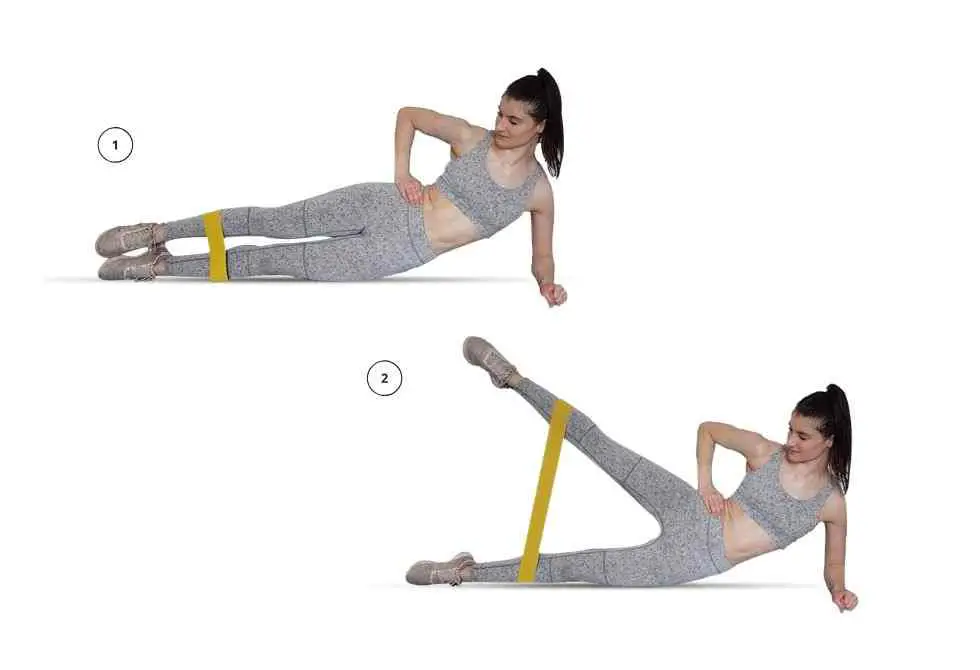
Lateral leg raises are excellent for isolating the gluteus medius.
How to do: Attach the resistance band to your ankles. Stand with your feet hip-width apart. Keeping your leg straight, lift it out to the side as far as possible and return to the starting position.
Tips: Avoid swinging your leg; perform the movement slowly and with control. Keep your core engaged and maintain proper posture throughout the exercise.
Squats with Resistance Bands
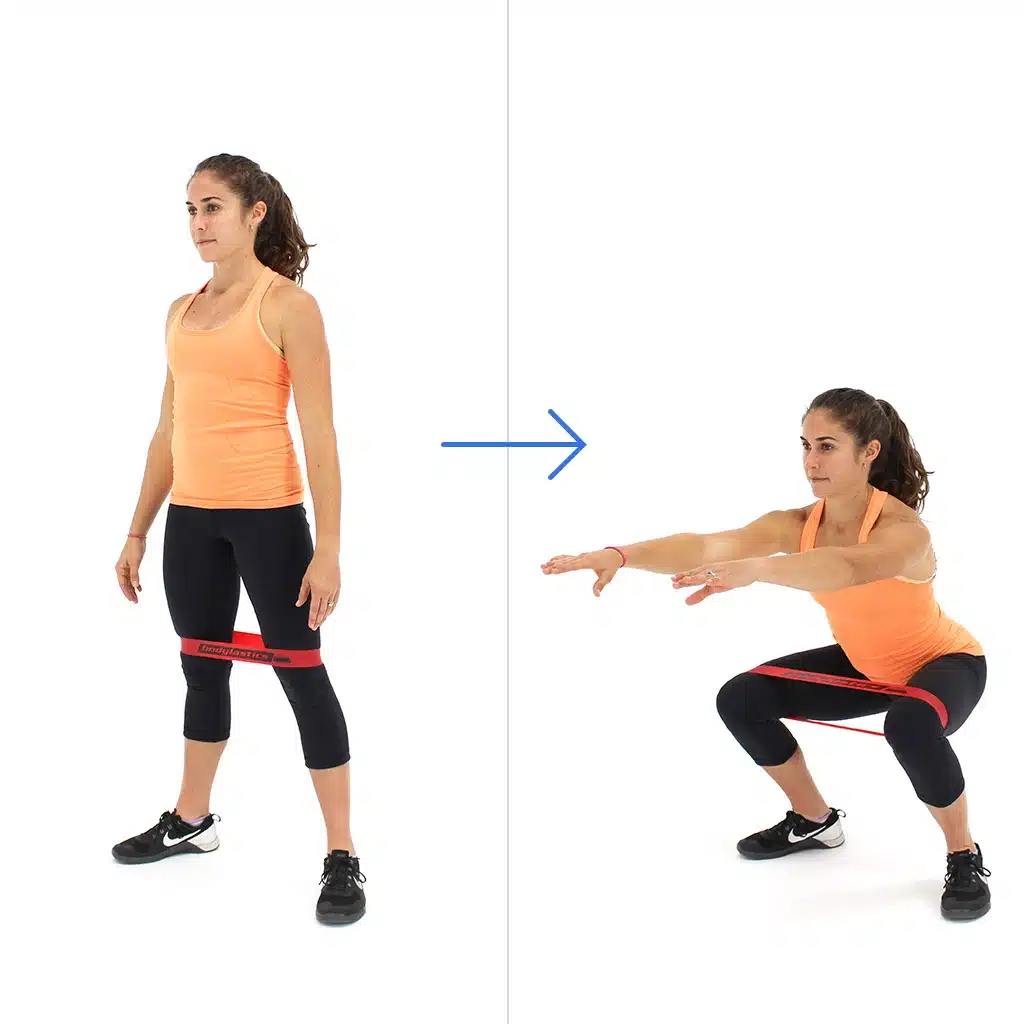
Squats with resistance bands provide a full lower body workout, engaging the glutes, quads, and hamstrings.
How to do: Step on the band with both feet and position it on your upper back. Perform squats as you usually would, keeping your knees in line with your toes.
Tips: Keep your chest up and your back straight. The band will add resistance, making the squat more challenging. Focus on maintaining proper form to avoid injury.
Best Glute Ham Raise Alternative Exercises
Incorporate these resistance band glute exercises into your routine, ensuring proper form and technique. Gradually increase the resistance to continue challenging your muscles and achieve optimal results. Remember to breathe steadily throughout each exercise and maintain consistency in your workouts for the best outcomes.
FAQs
Q 1: Can men benefit from glute workouts?
Ans. Yes, absolutely! Glute workouts aren’t limited to any gender. Strengthening your glutes can improve your posture, support your lower back, and enhance athletic performance, regardless of your gender.
Q 2: How long until I see results?
Ans. The time it takes to see results can vary from person to person. Generally, with consistent workouts and a healthy diet, you may notice improvements in strength and muscle tone within a few weeks. Significant changes often become more apparent after a couple of months.
Q 3: Should I use ankle or loop resistance bands?
Ans. It depends on your preferences and the specific exercises you want to do. Ankle resistance bands are great for lower body exercises, while loop bands are versatile and can be used for a wide range of exercises. Many people find that having both types in their workout routine provides more options.
Q 4: Can resistance band workouts replace traditional weightlifting?
Ans. Resistance band workouts can be a valuable addition to your fitness routine and are suitable for those looking to build strength and muscle. However, they may not entirely replace traditional weightlifting, as each has its unique benefits. Combining both can offer a well-rounded approach to achieving your fitness goals.
Conclusion
In conclusion, a resistance band glute workout is a fantastic way to achieve stronger, more defined glutes while improving your overall lower body strength. The benefits of such workouts extend beyond aesthetics, contributing to better posture, injury prevention, and enhanced athletic performance.
By understanding the anatomy of your glute muscles and following the right techniques, you can unlock the true potential of your lower body. With consistent effort, proper form, and dedication, you can sculpt the glutes you’ve always wanted. Remember that the key to success lies in a well-balanced workout routine, a healthy diet, and adequate rest.

Good day, and welcome to Fitthour. My name is Shubham Vijay, and I am a certified personal trainer and nutrition coach with 6 years of experience in the fitness industry. At Fitthour, we specialize in types of training, such as strength training, cardio, or HIIT, and our mission is to help clients achieve their fitness goals and improve their overall health.

